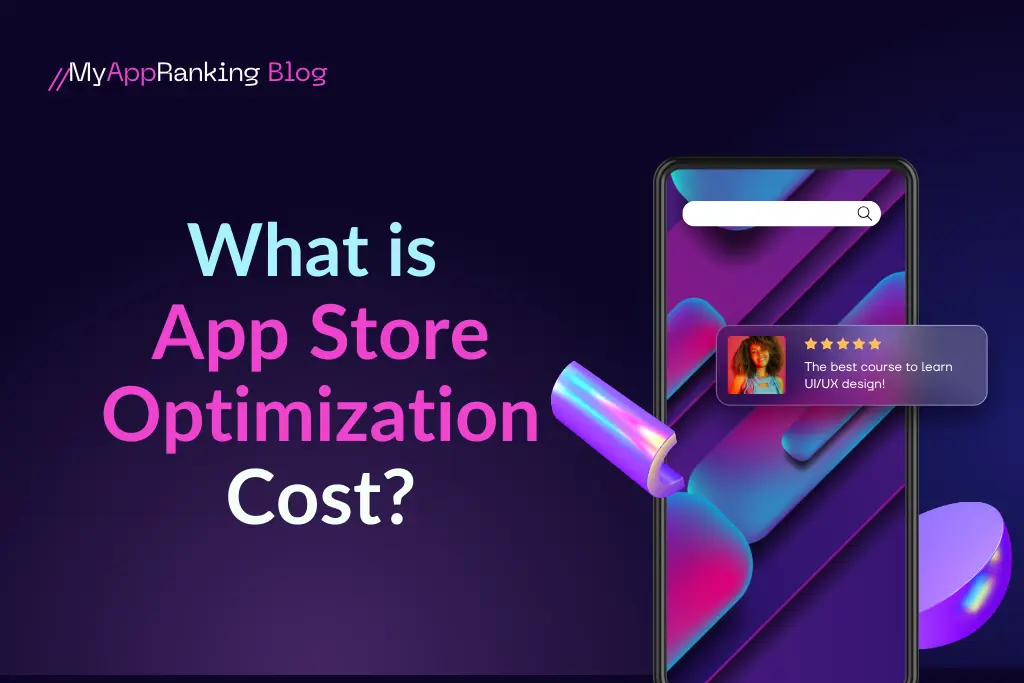Understanding App Store Optimization Pricing & Cost and Creating an Effective Budget

In this digital age, mobile applications have become an integral part of our lives due to their enormous benefits. There exist millions of apps in the various stores and due to this high number of apps in stores, the competition between the apps is becoming higher and higher to appear in the high-ranking search results. All app developers and marketers are struggling to beat this competition and can appear on top ranking in app stores. To solve this problem, App Store Optimization (ASO) comes into existence which is an organic method to increase the app’s visibility and ranking in search results to increase the organic app downloads. But here is the one question that is asked by developers and marketers what is the app store optimization cost? In this blog, we will describe all factors that can influence the App Store Optimization Pricing.
Understanding App Store Optimization (ASO)
Before jumping to the factors associated with the App Store Optimization Pricing, it will need to understand what is App Store Optimization. ASO is the optimization process to optimize the different elements of the app listing in the Google Play Store and Apple App Store to increase the app visibility, ranking, organic installs, and overall user experience.
Key ASO Elements:
1. Keyword Optimization:
Keyword searching and selecting the right keywords for the app optimization is crucial to reach the more targeted audience. This involves the complete keyword searching and competitor analysis process to optimize all keywords in the app listing to get a higher ranking, visibility, and installs.
2. App Title and Description:
Here optimize the app title and description according to the user intent to get the maximum reach to more potential customers. These elements should be optimized with more relevant and high-traffic keywords related to your app niche. incorporate these keywords in the app title and description while maintaining readability and user-friendliness.
3. App Icon and Screenshots:
The App Icon is the first visual element that the user has of your mobile application and conveys an idea to the user what this app is about. Creating eye-catching app icons and screenshots to convert the user’s attention to install the app and also effectively communicate your app’s features.
4. Ratings and Reviews:
Encouraging positive user ratings and reviews and addressing negative feedback to maintain a high rating. Positive user reviews not only boost your app’s credibility and attractiveness to potential users but also improve its visibility in app store search results.
5. App Localization:
App localization is important to reach new users and perform well in the global market. In this process, translate the Google Play Store listing page into different translations to make your app more inclusive and accessible to a wider audience.
6. App Updates:
Consistently update your app with new features and improvements to keep users engaged. By regularly adding new features, fixing bugs, and enhancing performance, you demonstrate your commitment to delivering a top-notch user experience.
Now, let’s explore the factors that influence the cost of App Store Optimization.
Factors Influencing App Store Optimization Cost
App Complexity:
The complexity of your app, including its features, functionality, and target audience, can significantly impact ASO cost. A more complex app may require more extensive keyword research and optimization efforts.
Competitive Landscape:
The level of competition in your app’s category and niche plays a crucial role. Highly competitive niches may require a more substantial investment in ASO to outrank competitors.
Keyword Research:
In-depth keyword research is a fundamental aspect of ASO. The cost can vary depending on the tools and resources used to identify relevant keywords.
Localization:
If your app targets international audiences, the cost of localizing your app’s listing for different regions and languages can add to the overall ASO budget.
Ongoing Optimization:
ASO is an ongoing process. Regularly monitoring and optimizing your app’s listing, responding to user feedback, and adapting to changes in the app stores’ algorithms require a continuous investment.
Tools and Resources:
Utilizing ASO tools and hiring ASO experts can also impact the cost. High-quality tools and experienced professionals may come with higher price tags.
Creating an ASO Budget
Now that we have a better understanding of the factors influencing ASO cost, let’s discuss how to create a budget for your ASO efforts:
Assess Your App’s Needs:
Begin by evaluating your app’s specific needs and goals. Consider factors such as competition, target audience, and desired outcomes.
Set Clear Objectives:
Define clear objectives for your ASO campaign. Are you aiming to increase downloads, improve user retention, or boost revenue? Having specific goals will help allocate your budget effectively.
Allocate Resources:
Determine how much you’re willing to invest in ASO. This budget should cover keyword research, app listing optimization, localization, and ongoing maintenance.
Prioritize Tasks:
Not all ASO tasks are equally important. Prioritize tasks based on their potential impact and allocate your budget accordingly. For instance, keyword research and optimization are typically high-priority tasks.
Consider DIY vs. Professional Services:
Depending on your budget and expertise, you can decide whether to handle ASO tasks in-house or hire professionals. Keep in mind that ASO is an evolving field, and staying updated is crucial.
Measure and Adjust:
Continuously monitor the performance of your ASO efforts and be prepared to adjust your budget based on the results. Analyze key performance indicators (KPIs) like organic downloads, conversion rates, and user reviews.
Final Thoughts
App Store Optimization is an essential strategy for mobile app success. While there is no fixed App Store Optimization Pricing, the investment required depends on various factors, including app complexity, competition, and goals. By carefully assessing your app’s needs, setting clear objectives, and allocating resources wisely, you can create an effective ASO budget that maximizes your app’s visibility and drives organic growth. Remember that ASO is an ongoing process, and staying committed to optimizing your app’s presence in app stores can lead to long-term success.
Do you Want
More App Downloads?
Boost the Mobile App Growth with the Ultimate Mobile App Marketing Experts
Latest Blogs
Do you Want
More App Downloads?
Boost the Mobile App Growth with the Ultimate Mobile App Marketing Experts
While the initial optimization is crucial, ASO is an ongoing process. Regular updates, monitoring, and adjustments are necessary to adapt to changes in app store algorithms and user preferences.
Yes, basic ASO can be done independently, but hiring professionals with expertise in keyword research, app store guidelines, and visual design can significantly improve your app’s visibility.
Results may vary, but significant improvements in app visibility and downloads can be observed within a few weeks to months after implementing ASO strategies.
Positive user reviews and high ratings can boost your app’s visibility. Encouraging satisfied users to leave reviews and addressing negative feedback is a part of ASO strategy.
You can measure the effectiveness of your ASO efforts by monitoring key performance indicators (KPIs) such as organic downloads, conversion rates, user engagement metrics, and changes in app store rankings and visibility. Assessing the return on investment (ROI) in terms of increased visibility and downloads compared to the ASO costs incurred can help evaluate the effectiveness of pricing strategies.




